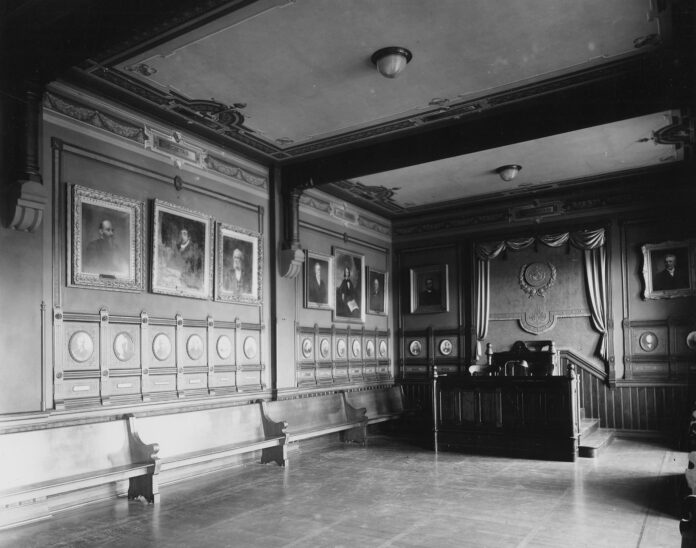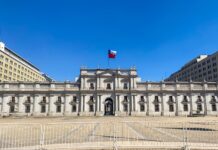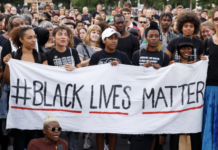![]()
Keep it a Free and Sacred Space.
Like all Americans, members of the Philodemic Society were riven by the tumultuous politics of the early American Republic, and tragically participated on both sides of the Civil War. Three Grand Reunions of Philodemic alumni (1867, 1871, 1874) brought men together who had fought each other. They served to organize and raise the funds needed to build Historic Healy Hall and retire the debt of its construction. Philodemic alumni also endowed Philodemic Hall.
In 1991, President Fr. Leo O’Donovan sent a letter to the Philodemic President, Eric George, who had revived the on-campus tradition. “Let me assure you,” wrote Fr. O’Donovan, “that I too share your concern that the Philodemic Room be returned to its original purpose.” He continued, “the original features of this beautiful space will be preserved. I hope to return the room to its original purpose…” There was a sense that this might not be true and a Hoya editorial soon after shed some light on the true extent and cost of the 1990’s reimagining. That expensive plan was abandoned. Ever since Fr. O’Donovan restored the endowed space, the Philodemic Society has flourished and its alumni have donated hundreds of thousands of dollars designated solely for Philodemic use.
The Philodemic Society’s motto is “Eloquence in the Defense of Liberty.” This is in recognition of the power of the spoken word as a tool of politics. Debate, like a martial art, can be used for good or ill, and it is the Society’s mission that, by training orators, it is training future political participants who must use their acquired powers of persuasion for good—in the defense of liberty.
It is nevertheless also recognized that the study and practice of rhetoric requires two-sided debate, and Philodemic Hall in particular is an invitation to contemplation of the uses to which rhetoric can be put, and its role in the momentous early American history in which Philodemicians were involved.
And, if debate is analogous to a martial art, Philodemic Hall is analogous to our dojo – our practice room. As befits such a space, it offers a lesson to those who enter it: it records in symbolic fashion the history of the Society, inviting consideration of the grave responsibilities that are assumed by those who use rhetoric to influence politics, just as martial artists assume grave responsibilities through the power they acquire.
To that end, Philodemic Hall is a museum of the turbulent politics of the 19th century, in which Philodemicians participated. The progression of emblazoned names on its ceiling of prominent American orators, whose speeches keynoted the debates of the early Republic, tells the story of the importance of rhetoric in America’s tumultuous early years. Philodemicians were themselves participants in these debates, both in their student days and, often tragically, in later life. The Society’s records show that Abolition was debated openly from its founding in 1830 until the ultimate debate by Georgetown students and alumni on the bloody fields of battle. Ultimately, the progression of the names on the ceiling tells the story of the triumph of the abolitionist and Unionist side in the Civil War, which birthed a better and freer America.
In turn, the portraits on its walls of prominent members and associates of the Society tell the story of the Society members’ participation in those years—including the bad parts of the story which must be told as well. None of its component parts can be removed without affecting the telling of this story.
It is a complex story, because life is like that; as befits a debating society, Philodemic Hall is meant to provoke thought and discussion. Once again: it is a reminder that, like a martial art, rhetoric is a tool of power that can be used for good or evil; and is intended to provoke meditation on this point.
Inasmuch as Philodemic Hall is about a tool of power, it is also about the Society’s—and Georgetown’s—connection to power, a connection which a freshman student at Georgetown seeks when he or she comes there to study, and especially when he or she enters Philodemic Hall to learn the art of rhetoric in order to do good in the world. What is represented on the walls and ceiling of Philodemic Hall—Georgetown’s connection to past influence—is part and parcel of what one seeks when one seeks acceptance to Georgetown and pays (steep) tuition. As such, in turn, Philodemic Hall is part of the soul of the University – an essential feature, not a bug.
It is indeed, as Mr. Justin Drewer of this year’s graduating class argued recently in a Hoya op-ed, a “sacred space.”
Philodemic Hall is an art and architectural treasure whose destruction amounts to rank Philistinism of the worst sort. None of Philodemic Hall’s component parts are severable; each part has a role in telling that story and inspiring the discussion and contemplation that Philodemic Hall is meant to inspire. Nor are they externally severable: Philodemic Hall is part of a complex that includes Gaston Hall, with which it shares an artistic theme and a designer, and ultimately is encompassed by the design and concept of Healy Hall itself. It is essential to them and inextricable from them; its demolition presages their own.
Indeed, those who have sought to “reimagine” Philodemic Hall have sought the obliteration of William Gaston—Georgetown’s first student—from commemoration in Philodemic Hall, and it takes no imagination whatsoever to imagine these standards being used to justify the elimination of Gaston Hall and perhaps other essential elements of Georgetown’s campus as well. This project amounts to the vandalism not only of Philodemic Hall, but of Healy Hall and of Georgetown itself. The one entails the next.
For all these reasons, “reimagining” Philodemic Hall by removing its component parts amounts to an assault on the soul of the University—not only its inheritance but its mission and purpose of training its students both to seek truth and to use persuasion for good.
In the end, the question is whether to destroy the inheritance, and trample the purpose, not only of the Philodemic Society but of Georgetown itself.
John Agar served as President of the Philodemic Society and as the first President of the Yard in the 1870’s. He raised funds for the Healy Building’s debt and to endow Philodemic Hall. The author has adopted this as his pen name.
Do you share this sentiment? Sign on to a letter calling to end and reverse the reimagination of the Philodemic hall here.












